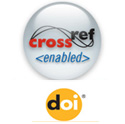|


Bu eser Creative Commons Atıf 4.0 Uluslararası Lisansı ile lisanslanmıştır. .
|
|
|
|
Yazar
|
:
Mehmet Yıldırım
& Mehmet TAŞDEMİR
|
|
|
Türü |
:
|
|
Baskı Yılı |
:
2019
|
|
Sayı |
:
43
|
|
Sayfa |
:
136-157
|
|
DOI Number: |
:
|
| Cite : |
Mehmet Yıldırım & Mehmet TAŞDEMİR, (2019). 4 – 12. SINIF ÖĞRENCİLERİNİN MATEMATİĞE İLİŞKİN ALGILARI: METAFORİK BİR YAKLAŞIM (GİRESUN İLİ ÖRNEĞİ). Route Education and Social Science Journal , 43, p. 136-157. Doi: 10.17121/ressjournal.2299.
|
|
1965 1482
|
Özet
Bu araştırmanın amacı, öğrencilerin en çok öğrenme güçlüğü çektikleri ve öğrenmeye karşı direnç gösterdikleri derslerin başında gelen matematik dersine ve bu dersin unsurları olan matematik öğretmeni, matematik sınavına karşı algılarını ürettikleri metaforlar yardımıyla ortaya çıkarmaktır. Bu bağlamda yapılmış olan çalışma, nitel araştırma yöntemlerinden durum çalışması niteliğindedir. Araştırmanın bulgularında çeşitliliğin sağlanması amacıyla araştırma, Giresun ilindeki çeşitli okullardan seçilen 349 öğrenci üzerinde yapılmıştır.
Veri toplama aracı olarak da araştırmacı tarafından geliştirilen MMTF (Matematik Metafor Toplama Formu) ve MEB’e ait Matematik tutum ölçeği kullanılmıştır. Veri toplama aracı 3 bölümden oluşmaktadır. 1. bölümde öğrencilere ait kişisel bilgiler (cinsiyet, sınıf, okul) ile ilgili sorular; 2. bölümde 3 sorudan (matematik dersi, matematik öğretmeni, matematik sınavı) oluşan üretilen metafor ve nedenleri ile ilgili sorular; 3. bölümde ise matematik tutum ölçeği bulunmaktadır. Verilerin analizinde nitel veri analizi yöntemi olarak içerik analizi kullanılmıştır. Ayrıca frekans analizi yapılmıştır. Araştırmacı toplanan verilerin analizinde, uygulanan tutum ölçeği verilerine göre “yüksek, orta, düşük düzeyde tutumlu” olarak sınıflandırılan öğrencilerin ürettikleri metaforları olumlu, olumsuz ve nötr olarak ayırt etmiş, ayrıca üretilen metaforlar, 8 kategori altında ( insan-hayvan, eşya-nesne, bitki, yiyecek-içecek, soyut kavram, etkinlik doğa olayı, diğer) gruplandırılmıştır.
Araştırmanın sonucunda öğrencilerin ürettikleri metaforların ilköğretim ilk kademelerinden son kademelerine gittikçe olumludan olumsuza kaydığı, okul türleri arasında farklılaşmalar olduğu (temel eğitimden akademik eğitim veren kurumlara doğru geçildikçe olumu metafor ve yüksek düzeyde tutumun azalıp, olumsuz metafor ve düşük düzeyde tutumun arttığı) görülmüştür.
Anahtar Kelimeler
Matematik, metafor, öğrenci metaforları, matematik metaforları
Abstract
This study aims to discover the students’ perception towards mathematics class, which is one of the hardest and least favored to learn classes for the students, and towards the instructors and exams of mathematics with the help of the metaphors they created. This is a case study of qualitative research in this context. This research was conducted to 349 students selected from various schools in Giresun Province to ensure diversity in the findings of the research.
Data were collected by Mathematics Metaphor Collection Form (MMTF) developed by the author and Mathematics Attitude Scale by Ministry of National Education. Data collection tool is constructed from 3 chapters. the 1st chapter includes questions about personal information of the students such as gender, grade and school; 2nd chapter includes questions about the created metaphor and reasons in 3 titles (mathematics class, instructor and exams), and 3rd chapter includes the mathematics attitude scale. The data were analyzed with content analysis as a method of qualitative analysis. a frequency analysis was applied, as well. The author classified the metaphors of the students who were grouped like “high, medium and low level attitude” according to data of attitude scale, to positive, negative and neutral, and categorized the created metaphors into 8 groups: human-animal, objects, plants, food-drinks, abstract concept, activity, nature and other.
It is observed that the metaphors created by students shifts from positive to negative from low grades to high grades and there are differences as regards to school types (It is understood that positive metaphor and high level attitude lessen while negative metaphor and low level attitude increase from primary education institutions to academic education institutions.)
Keywords
Mathematics,, metaphor, student metaphors, mathematics metaphors
|
|
